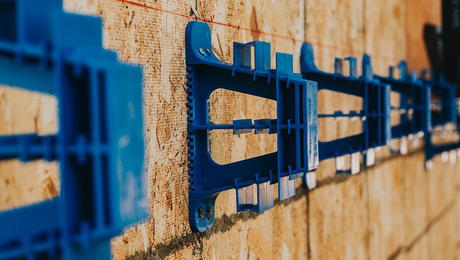Tailgate: Mike Sloggatt, Volunteer
A year after superstorm Sandy, this Long Island building educator reflects on the cleanup and recovery from this devastating storm.

You volunteered with a response team from Jehovah’s Witnesses and worked in Long Island communities including the Rockaways, Long Beach, and Massapequa. What kind of damage did you see there?
We saw all types of damage. The predominant inland damage was mostly to roofs that were older or improperly installed. The winds were not so strong as to cause massive damage; most of the inland damage was caused by trees.
Homes by the coast were primarily water-damaged. Wave action and the tidal surge caused most of the structural issues. The force of the water carried along floating debris that damaged decks, porches, garages, and houses, especially in areas subject to wave and tidal movement.
Fire was another factor. Emergency equipment was unable to reach affected residences during the storm.
What did volunteers like yourself do?
Our initial response was to take volunteers into homes to stabilize the structure from a moisture standpoint. We had no electricity or heat, so no mechanical capability to dry things out.
We gutted drywall and anything that holds water, cleaned and power-washed, mopped up, and let the buildings airdry. Then we followed up with multiple sanitizations to check mold growth.
Many of us bought supplies and donated materials on our own. We repaired structural issues if they were minor. We tarped homes. We removed debris. After stabilizing homes, we began rebuilding. For major structural or environmental problems, we referred the homeowners to professional companies to avoid danger to untrained volunteers.
What challenges did all this devastation present for contractors?
Initially, it was a shortage of labor and some supplies. The response also was slow as related issues came up and not everyone knew how to address them: Should the wiring be upgraded? Did the house need a new boiler? Did it need a new service panel?
One big issue for contractors was figuring out how they were going to get paid. How would repair projects be funded? How could they repair a home with more damage than the homeowners’ funds could cover? Determining what needed to be replaced and what needed to be fixed were also big issues.
Some contractors worked with us as volunteers and also took jobs for profit. Our response team also made recommendations to homeowners for builders they could call who could work on repairing their homes.
What types of challenges have homeowners faced?
Financing and lack of a clear rebuilding plan. For homes damaged cosmetically or with interior damage, the repair plan was pretty straightforward. For homes with structural damage, it has been different. Many homeowners need to or want to raise their home, but new flood maps are not complete in certain areas. Then there are additional issues: How high? Who will raise it? How much will it cost? How much will my flood insurance cost if I raise the house, or if I don’t?
Many homes with major damage are still sitting untouched due to lack of insurance, upside-down mortgages, foreclosure, or because the homeowners are struggling with municipalities on how to rebuild.
Storage was a big issue for a lot of folks. People had things that were salvageable but had no place to put them while their homes were being stabilized and repaired. We ended up building these small outbuildings we called “arks,” hand-framed, shedlike structures, 16 ft. long by 10 ft. wide. People were able to store their personal effects in these.
Are communities examining their local building codes so that they’re ready for another storm like Sandy?
Definitely. New flood maps will address that. The flood maps to a great degree will determine where the insurance needs are going to be. They will determine where houses have to be elevated. Any new home will now have to meet those requirements, as well as any home that is more than 50% rebuilt.
Are homeowners getting the help that they need?
Not all of them. Some have had a long, hard road. Those with good insurance companies or cash fared much better. For people who couldn’t afford flood insurance, FEMA was a big help with their grants. New York City was also a big help. They came up with a program to replace boilers, water heaters, and electrical. They did a phenomenal job of getting people back on their feet.
For more of the interview, go to www.finehomebuilding.com/extras.
























